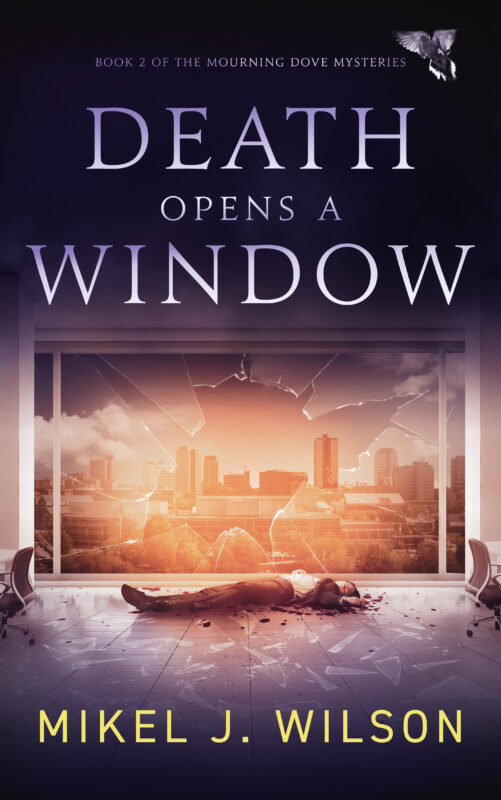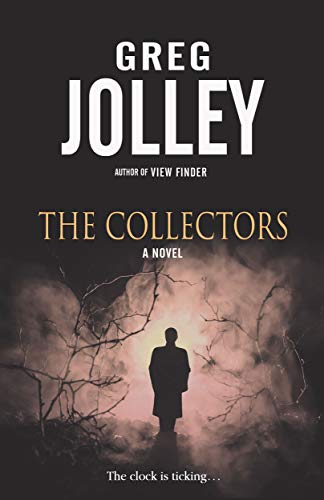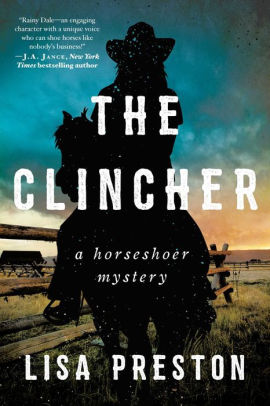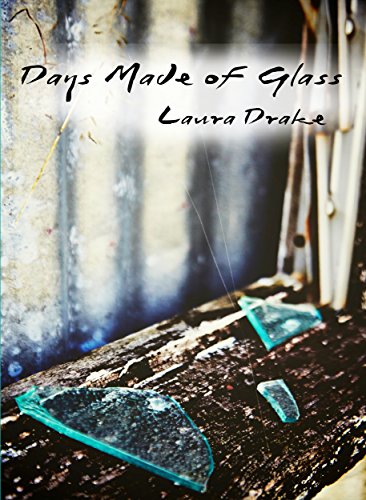Vintage Inspired by the Jet Age–Tail Fins
April 3, 2021 by Janet Elizabeth Lynn and Will Zeilinger in category Partners in Crime by Janet Elizabeth Lynn & Will Zeilinger tagged as cars, E.J. Williams, Jet Age, Tail fins, Vintage, writing research
Tail Fins

If you happen to be of a certain age, you will remember tail fins on the cars from your childhood.
Although most people think the trend of having tail fins on cars lasted approximately from 1955 to 1965, the first subtle appearances of tail fins began in the late ’40s. What started as a small chrome trim piece on a tail light, or a subtle fin of a few inches in length.
Growing in size each year until they (literally) peaked in 1959. American cars were not unique in this fad. By the early ’60s, the appeal began to wane. With a few exceptions, by 1965, they had disappeared from the automotive landscape.
A Little History

General Motors and Chrysler deserve the credit with starting the finny “arms race.” Harley Earl and Bill Mitchell at GM and Virgil Exner at Chrysler attempted to wow the public with each new model year by introducing the most outlandish fins on their vehicles. Ford was in the mix too. Remember, the original Thunderbird also employed design elements that took their cues from jet aircraft. This trend carried through to the 1963 model year. The full-sized Ford lost its fins by 1962.

Even European automotive designers got into the act. French Italian designers have always been avant-garde, but even the British and Germans, who tend to be more conservative, slapped fins on some of their cars.
And the Winner Is…
The ultimate fins of the era belonged to the 1959 Cadillac El Dorado Biarritz. The eye-popping red paint job and fins that look like they could impale someone made this car unmistakeable…Even today.

Vintage 1960s Automobiles: The Chevrolet Corvair by Will Zeilinger
February 3, 2020 by Janet Elizabeth Lynn and Will Zeilinger in category Partners in Crime by Janet Elizabeth Lynn & Will Zeilinger tagged as 1960s, Car, history, Janet Elizabeth Lynn, Vintage, Will Zeilinger
Manufactured by Chevrolet for model years 1960–1969, is still the only American-designed, mass-produced passenger car with a rear-mounted, air-cooled engine.
Initially, the innovative Corvair was manufactured and marketed as a 4-door sedan.
The compact Chevrolet Corvair was designed to compete with Volkswagens in the US market.

The 1960 Corvair went on sale on October 2, 1959, and was the first American compact sedan with a rear-mounted, air-cooled engine, unit-body construction, three-across seating, and the availability of an automatic transmission. Only four-door sedans were available at first, then came the 2-door coupe, convertible, 4-door station wagon, passenger van, commercial van, and pickup truck body styles.
Though inspired by Volkswagen’s four-cylinder engine, Chevrolet engineers used Porsche engines as a guide.
To stay competitive with the VW Beetle, the new Ford Falcon, and Plymouth Valiant, Chevrolet chose to cut corners right where it showed: on the interior. The basemodel 500 was particularly drab. Everything inside was gray, both the fabric and vinyl upholstery and black rubber floor mats. The 700 models came with three interior colors from which to choose. Extra-cost options on both the 700 and 500 models includedthings we take for granted today, like sun visors for both driver and passenger, armrests, or a cigarette lighter.
The Corvair sales took a significant upturn when the Monza coupe debuted at the 1960 Chicago Auto Show.

Though the Monza would rewrite what everyone’s idea of a Corvair was an alternative to the typical front-engined American family cars of the period.
The death knell for the Corvair came when Ralph Nader’s 1965 book “Unsafe at Any Speed” claimed that the car’s design that incorporated swing-axle suspension created a far greater risk of the vehicle rolling, which he described as “the one-car accident.”

Even though the suspension had been redesigned for much better handling and safety, the damage was done. Nader’s book became a best-seller, but in the consumer’s mind, the reputation of the Corvair was tarnished forever. Chevrolet ceased production of the Corvair with the 1969 model.
The Skylar Drake Mysteries
0 0 Read more
Vintage Perfumes: The Fragrances That Defined Each Decade by Connie Vines
May 13, 2016 by A Slice of Orange in category Archives tagged as Chanel#5, Coco Chanel, com, Connie Vines, fashion, novelsbyconnievines, OCC RWA, perfume, Vintage, writingNothing can transport you back in time like a fragrance. They say that your sense of smell is the most powerful and evocative sense, and it’s true: Emeraude reminds me of my mother, Quorum my husband, and Halston Z-14 reminds me of my teens and guys who bathed in a cologne—rather than indulging in a spritz or two.
“A woman who doesn’t wear perfume has no future.†– Coco Chanel
This may have been a dramatic overstatement, however, when I was in the business of selling perfume, quotes such as these, gave women confidence when she entered a room! And Chanel No. 5 is one of the most popular fragrances of all time, a bottle of it is sold every 30 seconds (this includes me ïŠ, too).
Coco Chanel also stated that women should wear perfume wherever they hoped to be kissed. Wise words indeed – please note that this does not mean ‘layered’ in perfume, as perfume counter girls armed with spray bottles will advise you. No one should be able to smell your perfume unless they’re that little bit closer than is polite, then it should be something delicious and intoxicating.
Whilst researching which perfumes were popular over the decades I was surprised how many of these I’ve actually owned. Over the years, I’ve tried Anais Anais, Shalimar, Opium, Poison, Red, and Patou 1000 before I finally settled on Chanel No. 5. Of course, I selected one of the most expensive perfumes on the market, but I guess there is a good reason why it’s been a bestseller since it was launched in 1921!
Vintage Perfumes: The Fragrances that Defined Each Decade
It’s surprising how many of these perfumes are still best sellers even now, but then why would they go out of fashion?
Popular Perfumes in the 1920s.
Chanel No. 5, launched in 1921, was an immediate success even though it was the preserve of the rich at this time. Famously worn by Marilyn Monroe, the square bottle design was rumored to been inspired by the design of a whiskey decanter.
Guerlain’s Shalimar launched first in 1925. It is one of the most popular fragrances of all time and was said to be inspired by Mumtaz Mahal, the women for whom the Taj Mahal was built. The perfume was named after the Gardens of Shalimar in Lahore, Pakistan, which were also built for her.
Popular Perfumes in the 1930s.
Tabu by Dana Fragrances which were popular in the 1930s included Tabu by Dana (a sexy evening perfume), which was launched in 1932 and Je Reviens by House of Worth, both of which remain available today.
In 1934 Elizabeth Arden developed Blue Grass.
Perhaps the most notable perfume of the 1930s was Joy by Jean Patou, voted Scent of the 20th Century at the Fragrance Foundation FiFi awards in 2000. It was created in 1929 (the year of the Wall Street Crash) and even though it was marketed as ‘the world’s most expensive perfume’, it was a huge hit. It is also considered to be one of the greatest floral fragrances of all time.
Popular Perfumes in the 1940s.
L’Air du Temps by Nina Ricci (in a pretty glass bottle with a bottle stopper fashioned as two doves). After the war lighter and fresher perfumes became more popular, one of which was the still-popular Miss Dior by Christian Dior in 1947
Popular Perfumes in the 1950s.
Femme de Rochas was a rich, sultry perfume aimed at the femme fatale created in 1944.
Arpege by Lanvin is a floral romantic perfume, created in 1927, but became particularly popular during the 1950s.
Max Factor’s Hypnotique and Primitif (as advertised by Jean Patchett above) were popular and an affordable perfume for the masses compared to the fragrances by the big fashion houses.
Soir de Paris by Bourjois was a popular fragrance amongst teenagers during the 1950s. It was discontinued in 1969, but relaunched in 1992
Popular Perfumes in the 1960s.
Oh! de London by Tuvache, YSL Rive Gauche was a popular 1960s scent
Hubert de Givenchy created L’Interdit for Audrey Hepburn and she wore the perfume for many years before it was released to the public in 1957. She featured in the adverts for L’Interdit throughout the 1960s.
Tuvache’s Oh! de London is a bright sparkling scent which perfectly captured the mood of the swinging sixties.
Guerlain introduced the heady oriental scent Chamade in 1969.
Popular Perfumes in the 1970s.
Charlie by Revlon and Diorella by Christian Dior, a perfume for the independent woman who has everything, were both very popular.
Opium by Yves Saint Laurent, launched in 1977, and was a heady, rich oriental evening perfume.
Christian Dior released the classic perfume Diorella, which combines citrus and musky notes.
Anais Anais by Cacharel, launched in 1978 and was an immediate hit (my brother gave this to me as a Christmas Gift).
Did I list one of your favorite perfumes?
Or, perhaps a fragrance you’ve never dared to try?
Perfuming is an art. Indulge your senses, enjoy the fragrance—it’s mystical, it’s magical, is the new youïŠ.
Happy Reading,
Connie Vines
Affiliate Links
A Slice of Orange is an affiliate with some of the booksellers listed on this website, including Barnes & Nobel, Books A Million, iBooks, Kobo, and Smashwords. This means A Slice of Orange may earn a small advertising fee from sales made through the links used on this website. There are reminders of these affiliate links on the pages for individual books.
Search A Slice of Orange
Find a Column
Archives
Featured Books
DAYS MADE OF GLASS
Shared blood defines a family, but spilled blood can too.
More info →Newsletter
Contributing Authors
Search A Slice of Orange
Find a Column
Archives
Authors in the Bookstore
- A. E. Decker
- A. J. Scudiere
- A.J. Sidransky
- Abby Collette
- Alanna Lucus
- Albert Marrin
- Alice Duncan
- Alina K. Field
- Alison Green Myers
- Andi Lawrencovna
- Andrew C Raiford
- Angela Pryce
- Aviva Vaughn
- Barbara Ankrum
- Bethlehem Writers Group, LLC
- Carol L. Wright
- Celeste Barclay
- Christina Alexandra
- Christopher D. Ochs
- Claire Davon
- Claire Naden
- Courtnee Turner Hoyle
- Courtney Annicchiarico
- D. Lieber
- Daniel V. Meier Jr.
- Debra Dixon
- Debra H. Goldstein
- Debra Holland
- Dee Ann Palmer
- Denise M. Colby
- Diane Benefiel
- Diane Sismour
- Dianna Sinovic
- DT Krippene
- E.B. Dawson
- Emilie Dallaire
- Emily Brightwell
- Emily PW Murphy
- Fae Rowen
- Faith L. Justice
- Frances Amati
- Geralyn Corcillo
- Glynnis Campbell
- Greg Jolley
- H. O. Charles
- Jaclyn Roché
- Jacqueline Diamond
- Janet Lynn and Will Zeilinger
- Jaya Mehta
- Jeff Baird
- Jenna Barwin
- Jenne Kern
- Jennifer D. Bokal
- Jennifer Lyon
- Jerome W. McFadden
- Jill Piscitello
- Jina Bacarr
- Jo A. Hiestand
- Jodi Bogert
- Jolina Petersheim
- Jonathan Maberry
- Joy Allyson
- Judy Duarte
- Justin Murphy
- Justine Davis
- Kat Martin
- Kidd Wadsworth
- Kitty Bucholtz
- Kristy Tate
- Larry Deibert
- Larry Hamilton
- Laura Drake
- Laurie Stevens
- Leslie Knowles
- Li-Ying Lundquist
- Linda Carroll-Bradd
- Linda Lappin
- Linda McLaughlin
- Linda O. Johnston
- Lisa Preston
- Lolo Paige
- Loran Holt
- Lynette M. Burrows
- Lyssa Kay Adams
- Madeline Ash
- Margarita Engle
- Marguerite Quantaine
- Marianne H. Donley
- Mary Castillo
- Maureen Klovers
- Megan Haskell
- Melanie Waterbury
- Melisa Rivero
- Melissa Chambers
- Melodie Winawer
- Meriam Wilhelm
- Mikel J. Wilson
- Mindy Neff
- Monica McCabe
- Nancy Brashear
- Neetu Malik
- Nikki Prince
- Once Upon Anthologies
- Paula Gail Benson
- Penny Reid
- Peter Barbour
- Priscilla Oliveras
- R. H. Kohno
- Rachel Hailey
- Ralph Hieb
- Ramcy Diek
- Ransom Stephens
- Rebecca Forster
- Renae Wrich
- Roxy Matthews
- Ryder Hunte Clancy
- Sally Paradysz
- Sheila Colón-Bagley
- Simone de Muñoz
- Sophie Barnes
- Susan Kaye Quinn
- Susan Lynn Meyer
- Susan Squires
- T. D. Fox
- Tara C. Allred
- Tara Lain
- Tari Lynn Jewett
- Terri Osburn
- Tracy Reed
- Vera Jane Cook
- Vicki Crum
- Writing Something Romantic
Affiliate Links
A Slice of Orange is an affiliate with some of the booksellers listed on this website, including Barnes & Nobel, Books A Million, iBooks, Kobo, and Smashwords. This means A Slice of Orange may earn a small advertising fee from sales made through the links used on this website. There are reminders of these affiliate links on the pages for individual books.






























































